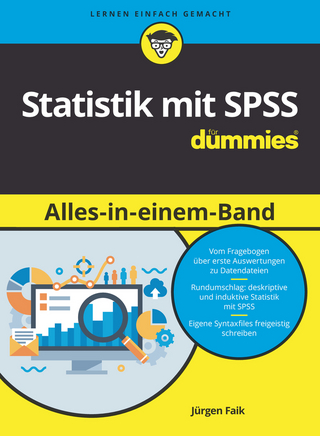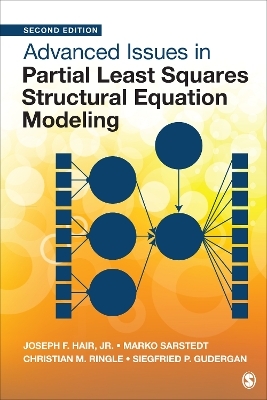SAS for Data Analysis
Intermediate Statistical Methods
Seiten
2008
|
2008 ed.
Springer-Verlag New York Inc.
978-0-387-77371-1 (ISBN)
Springer-Verlag New York Inc.
978-0-387-77371-1 (ISBN)
- Titel erscheint in neuer Auflage
- Artikel merken
Zu diesem Artikel existiert eine Nachauflage
This book is an integrated treatment of applied statistical methods, presented at an intermediate level. It serves as an advanced introduction to the SAS programming language as well as demonstrating how to use SAS to analyse of a wide variety of data.
This book is intended for use as the textbook in a second course in applied statistics that covers topics in multiple regression and analysis of variance at an intermediate level. Generally, students enrolled in such courses are p- marily graduate majors or advanced undergraduate students from a variety of disciplines. These students typically have taken an introductory-level s- tistical methods course that requires the use a software system such as SAS for performing statistical analysis. Thus students are expected to have an - derstanding of basic concepts of statistical inference such as estimation and hypothesis testing. Understandably, adequate time is not available in a ?rst course in stat- tical methods to cover the use of a software system adequately in the amount of time available for instruction. The aim of this book is to teach how to use the SAS system for data analysis. The SAS language is introduced at a level of sophistication not found in most introductory SAS books. Important features such as SAS data step programming, pointers, and line-hold spe- ?ers are described in detail. The powerful graphics support available in SAS is emphasized throughout, and many worked SAS program examples contain graphic components.
This book is intended for use as the textbook in a second course in applied statistics that covers topics in multiple regression and analysis of variance at an intermediate level. Generally, students enrolled in such courses are p- marily graduate majors or advanced undergraduate students from a variety of disciplines. These students typically have taken an introductory-level s- tistical methods course that requires the use a software system such as SAS for performing statistical analysis. Thus students are expected to have an - derstanding of basic concepts of statistical inference such as estimation and hypothesis testing. Understandably, adequate time is not available in a ?rst course in stat- tical methods to cover the use of a software system adequately in the amount of time available for instruction. The aim of this book is to teach how to use the SAS system for data analysis. The SAS language is introduced at a level of sophistication not found in most introductory SAS books. Important features such as SAS data step programming, pointers, and line-hold spe- ?ers are described in detail. The powerful graphics support available in SAS is emphasized throughout, and many worked SAS program examples contain graphic components.
Introduction to SAS language. - More on SAS programming and some applications. - Statistical graphics using SAS/GRAPH. - Statistical analysis of regression models. - Analysis of variance models. - Analysis of variance: random mixed effects models. - Appendices. - References. - Index.
| Reihe/Serie | Statistics and Computing |
|---|---|
| Zusatzinfo | XII, 558 p. With 100 SAS Programs. |
| Verlagsort | New York, NY |
| Sprache | englisch |
| Maße | 155 x 235 mm |
| Gewicht | 1016 g |
| Themenwelt | Mathematik / Informatik ► Mathematik ► Computerprogramme / Computeralgebra |
| Mathematik / Informatik ► Mathematik ► Wahrscheinlichkeit / Kombinatorik | |
| ISBN-10 | 0-387-77371-1 / 0387773711 |
| ISBN-13 | 978-0-387-77371-1 / 9780387773711 |
| Zustand | Neuware |
| Haben Sie eine Frage zum Produkt? |
Mehr entdecken
aus dem Bereich
aus dem Bereich
Buch | Softcover (2024)
SAGE Publications Inc (Verlag)
72,30 €
An Introduction
Buch | Hardcover (2023)
SAGE Publications Ltd (Verlag)
144,65 €





